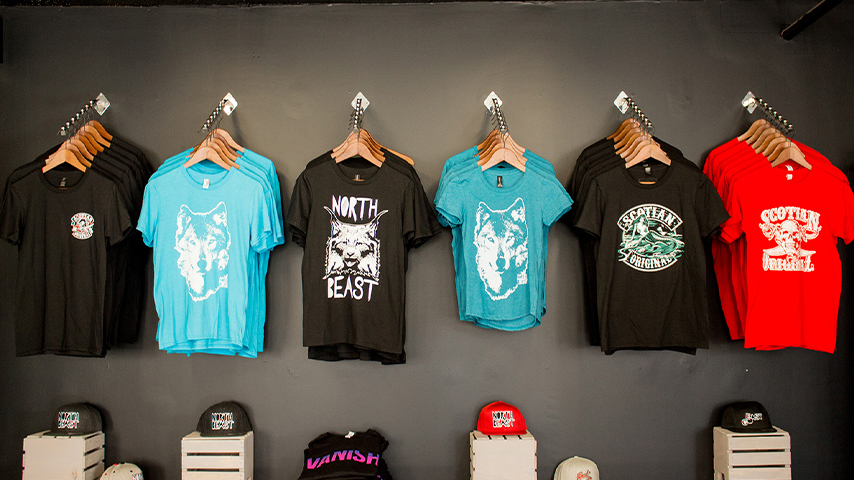Custom T-shirts have become a popular way for individuals and businesses to express creativity, promote brands, and celebrate special occasions. Several printing techniques are available to create custom T-shirts, each with its own set of advantages and disadvantages. In this article, we will explore the most widely used custom T-shirt printing techniques, including screen printing, direct-to-garment (DTG) printing, heat transfer, dye sublimation, and vinyl cutting.
- Screen Printing
Overview
Screen printing, also known as silk screening, is one of the oldest and most popular methods for printing custom T-shirts. It involves creating a stencil (or screen) and using it to apply layers of ink on the fabric.
Process
- Design Creation: The design is created and separated into individual colors.
- Screen Preparation: As the design progresses, a screen is created for every color. The screen is a fine mesh stretched over a frame, coated with a light-sensitive emulsion.
- Exposing the Screen: The screen is exposed to light through a film positive of the design, hardening the emulsion except where the design blocks the light.
- Washing the Screen: The screen is washed, leaving the design area clear.
- Printing: Ink is applied to the screen and pushed through the mesh onto the fabric using a squeegee. This process is repeated for each color.
- Curing: The printed T-shirts are cured in a dryer to set the ink.
Advantages
- Durability: Screen-printed designs are long-lasting and can withstand many washes.
- Vibrant Colors: Allows for bright and vivid colors.
- Cost-Effective: Economical for large orders due to reduced cost per unit.
Disadvantages
- Setup Time: Initial setup is time-consuming and requires multiple screens for multi-color designs.
- Limited Detail: Fine details and high-resolution images can be challenging to reproduce.
- Direct-to-Garment (DTG) Printing
Overview
DTG printing is a relatively new method that uses inkjet technology to print designs directly onto the fabric. It is ideal for small orders and complex designs.
Process
- Design Preparation: The design is prepared in a digital format.
- Pre-Treatment: The fabric is pre-treated to ensure the ink adheres properly.
- Printing: The T-shirt is placed in a DTG printer, where the design is printed directly onto the fabric.
- Curing: The printed T-shirt is cured using heat to set the ink.
Advantages
- High Detail: Capable of printing intricate designs and high-resolution images.
- No Setup Time: Minimal setup, making it ideal for small orders and one-offs.
- Color Range: Can print a wide range of colors and gradients.
Disadvantages
- Cost: More expensive per unit for large orders compared to screen printing.
- Durability: Less durable than screen printing, especially after multiple washes.
- Heat Transfer
Overview
Heat transfer printing involves transferring a design from a special paper to the fabric using heat and pressure. It includes methods like heat transfer vinyl (HTV) and plastisol transfers.
Process
- Design Creation: The design is created and printed onto transfer paper using a printer.
- Cutting: For HTV, the design is cut out from vinyl sheets.
- Weeding: Excess vinyl is removed, leaving only the design.
- Heat Pressing: The design is placed on the T-shirt and pressed with a heat press to transfer the ink or vinyl onto the fabric.
Advantages
- Versatility: Suitable for a wide range of fabrics and materials.
- Detail and Color: Capable of producing detailed and multi-colored designs.
- Quick Setup: Fast setup, making it ideal for short runs and on-demand printing.
Disadvantages
- Durability: Less durable than screen printing; designs may crack or peel over time.
- Feel: The printed area can feel heavier and less breathable.
- Dye Sublimation
Overview
Dye sublimation is a technique that uses heat to transfer dye onto polyester fabrics. It is ideal for all-over prints and photo-quality designs.
Process
- Design Preparation: The design is created digitally.
- Printing: The design is printed onto special sublimation transfer paper using sublimation inks.
- Heat Transfer: The transfer paper is placed on the T-shirt, and a heat press is used to apply heat and pressure, causing the dye to turn into gas and permeate the fabric.
Advantages
- Vibrant Colors: Produces bright, vivid, and long-lasting colors.
- All-Over Printing: Suitable for all-over prints without affecting the fabric’s feel.
- Durability: Designs are durable and do not crack or peel.
Disadvantages
- Fabric Limitation: Only works on polyester or poly-coated fabrics.
- Cost: Higher cost due to the need for specialized inks and paper.
- Vinyl Cutting
Overview
Vinyl cutting involves cutting designs out of vinyl sheets and then heat pressing them onto the fabric. It is commonly used for simple, single-color designs.
Process
- Design Creation: The design is created digitally and prepared for cutting.
- Cutting: A vinyl cutter is used to cut the design out of a vinyl sheet.
- Weeding: Excess vinyl is removed, leaving only the design.
- Heat Pressing: The design is placed on the T-shirt and pressed with a heat press to bond the vinyl to the fabric.
Advantages
- Durability: Vinyl designs are durable and can withstand many washes.
- Color Options: Wide range of colors and finishes, including metallic and glitter.
- No Setup Time: Minimal setup, making it ideal for small orders and custom designs.
Disadvantages
- Limited Detail: Not suitable for complex designs or high-resolution images.
- Feel: The vinyl can feel heavier and less flexible than other printing methods.
Choosing the Right Printing Technique
Choosing the right T-shirt printing technique depends on various factors, including the type of design, the quantity of shirts needed, the fabric of the shirts, and the budget.
Factors to Consider
- Design Complexity: For intricate and high-detail designs, DTG or dye sublimation are ideal. For simpler designs, screen printing or vinyl cutting may be more suitable.
- Order Quantity: Screen printing is cost-effective for large orders, while DTG and heat transfer are better for small orders.
- Fabric Type: Dye sublimation is best for polyester fabrics, while screen printing and heat transfer work on various fabrics.
- Durability: For long-lasting prints, screen printing and vinyl cutting are excellent choices. DTG and heat transfer may have less durability.
- Budget: Consider the cost per unit, setup fees, and overall budget. Screen printing and vinyl cutting are generally more economical for bulk orders, while DTG and heat transfer are more cost-effective for smaller runs.
Conclusion
T-shirt printing techniques offer a variety of options for creating custom designs, each with its unique advantages and considerations. Understanding the differences between screen printing, DTG printing, heat transfer, dye sublimation, and vinyl cutting can help you choose the best method for your specific needs. Whether you are printing a single custom T-shirt or a large batch for a promotional event, selecting the right technique will ensure your designs come out looking vibrant, professional, and durable.




